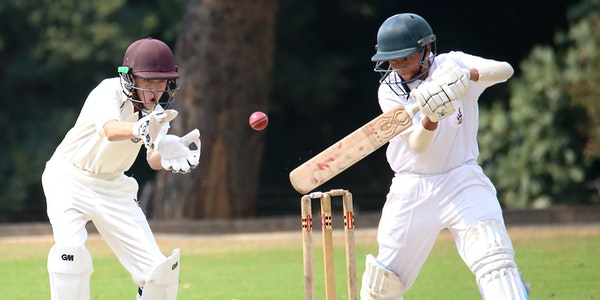Lux Level Required for Cricket Stadium
Cricket ground requirements
- Size of the Ground
The size of the training ground is a nearly circular field with a radius of no less than 55 meters. The training area is about half of the standard field. However, the pitching and hitting areas must be set up in the training ground, and their orientation, size, materials, equipment and facilities are the same as those of the competition field.
A fairway with a net length of 20.12 meters and a net width of 2.64 meters is arranged in the direction of 30-60 degrees (generally about 45 degrees) from northwest to Southeast in the center of cricket court. There should be 0.51 m buffer zone on each side of fairway length and width.
On both sides of the fairway, there are throwing (hitting) areas, which are surrounded by a boundary line called “area line”, and each of them has a “three pillar gate” composed of three vertical wooden columns and two transverse beams. The two “three pillar doors” of the fairway shall be placed on both sides of the fairway in parallel, 20.12 meters apart, and each group shall be 22.86 cm wide.
The vertical ball column must be 71.1 cm away from the surface of the fairway and be a cylinder. The diameter of each column must be between 3.81 cm and 3.49 cm. When the small wood is placed on the top of the door post, it can not exceed the top of the door post by 1.27 cm, and will not interfere with the verticality of the door post.
For general practice and recreational cricket playgrounds, 250 to 350 lux is enough for players to compete gently among team members, while, professional competitions require 500 to 750 lux. The lux level is higher because the exercise is more intense. High-intensity lighting can stimulate the vitality of cricket players, thereby improving their performance. For the cricket stadium to host international broadcast competitions, it requires the highest standard of about 1500 to 2500 lux. This is because it provides a clearer environment for photo and video shooting.
What is Cricket
Cricket, also known as wooden ball, is a “gentleman’s game” (gentleman’s game) that advocates sportsmanship and “fairplay”. Cricket is a comprehensive sport that exercises hand-eye coordination, and integrates upper-limb movement control, skills and strength. The competition event is a team competition.
Cricket originated in the United Kingdom and is popular in Australia, New Zealand, Pakistan, India, Bangladesh, Nepal and other countries.
The season of cricket is in spring and summer, and is complementary to football played in autumn and winter.
In the 13th century, King Edward I of England participated in cricket-like sports in Kent, southeast England. Cricket is known as a noble sport. Henry VIII called cricket the “king’s sport”. It is the national game of the United Kingdom and one of the three major sports (football, rugby, and cricket) in the United Kingdom. Cricket is also regarded as a middle-class sport. In the past 20 years, Australia has been the dominant player in cricket, but the strength of England is picking up.
Game Rules of Cricket
Time
Cricket matches have different lengths. In international cricket matches, a test match is played for six hours or more per day and lasts for five days. Each team will play two rounds; there are also many lunches and Tea breaks and rich cricket terminology are all causes that bother the cricket layman. In addition, there are single-day competitions, in which each side only plays a round-limited game, which is also called Limited Overs (Limited Overs).
Single-day competitions are divided into international single-day competitions (One Day International) and international twenty 20 competitions (Twenty20 International). The former is 50 rounds per side, and the latter is 20 rounds per side, making long matches full of fierceness. In addition to international competitions, there are unlimited rounds of First Class, 50 rounds of one-day matches (One Day, also known as List A) and 20 rounds of 20 matches (Twenty20). . Further down there are matches between local small clubs. Generally, only one round-free match per side and 50 rounds per day single-day match are held.
Aims
Cricket is a sport mainly based on batting, bowling and fielding. Participants are divided into two teams to play, usually 11 people in each team, one team to attack, the other team to defend. The offensive player is a batsman, and only two people can be sent off the field each time during the game to strive for high scores; one person is responsible for hitting the ball to score points, and the other is to cooperate with them.
On the defending side, 11 players were off the field at the same time for the game. One person, the bowler, was responsible for throwing the ball into the wicket behind the batter in an attempt to drive him out. The other players were outsiders. The fielder is responsible for catching the ball hit by the batter and preventing the attacking team from scoring (run). After the attacking team’s innings are over, the two teams will switch offense and defense, and the team with the higher score is the winner.
The pitching side tries its best to get the opposing batter out of the game. There are mainly the following ways for a batsman to get out:
- The bowler hits the goal post (Bowled).
- The ball was caught by the player of the pitching team before it hits the ground after being hit by the batter (Caught).
- The batter’s leg blocked the ball (Leg Before Wicket, LBW for short). If the ball falls within the narrow area between two goal posts and the batter’s leg blocks the ball that would have hit the goal post, the batter is out. This rule is similar to offside in football.
- When the batter is running, the receiver of the pitching side is always ready to hit the post with the ball. If the receiver hits the post with the ball before the batter runs back to the boundary of the hitting zone, the batter Run out.

- The batsman did not hit the ball and left the boundary of the hitting zone. The wicketkeeper hit the wicket with the ball before the batsman returned, and the batsman went out (Stumped).
- If a batter holds the ball with his hand, it means handball and is also out (Handling the ball). This happens rarely.
7. deliberately hit the ball twice (Hit the ball twice).
- Time out. This situation rarely happens. Cricket is a gentleman’s sport, and the players on both sides respect each other. According to the rules, after the goalpost is hit, the new batsman must be in place within 3 minutes. If it is later than three minutes, the batter is out.
- The batter touches the goal post (Hit wicket).
- The batter disrupts the field. It rarely happens.
Player
All 11 players on the pitching side are on the field, but only two players on the batting side are on the field at a time. The captain of the pitching team can place 9 receivers around the court. The other two are bowlers and rear catchers. The bowler pitches the ball, and the opposing batter hits the ball and manages to complete the run to score. Every time you run between two goal posts, you get one point. If the ball hit by the batter reaches the sidelines, 4 points are awarded. If the ball is hit directly out of bounds, 6 points are awarded.
Although 11 players on the batting side have a chance to hit the ball, if 10 batsmen have already gone out, the whole team is out of the game because the last batsman has no teammates to cooperate with him. Both sides can have a substitute, called the “twelfth man”, but he can’t throw the ball, can’t hit the ball, can only defend the ball.
A round does not necessarily require the entire team to be eliminated. If the captain thinks that his side has scored enough points, it can declare the round (declared). This method can only be found in no-round restricted matches, because in restricted rounds, which side gets more points than in the prescribed round, it becomes meaningless to announce the end.
Although there is no mention in the cricket rules about whether the restricted rounds can be declared over, this kind of thing never happens.
In addition, in the test match, if the first game of the team that plays first has 150 or more points more than the score of the first game of the later team, the team captain who plays first can choose to let the team that plays second start the second game first (follow on).



